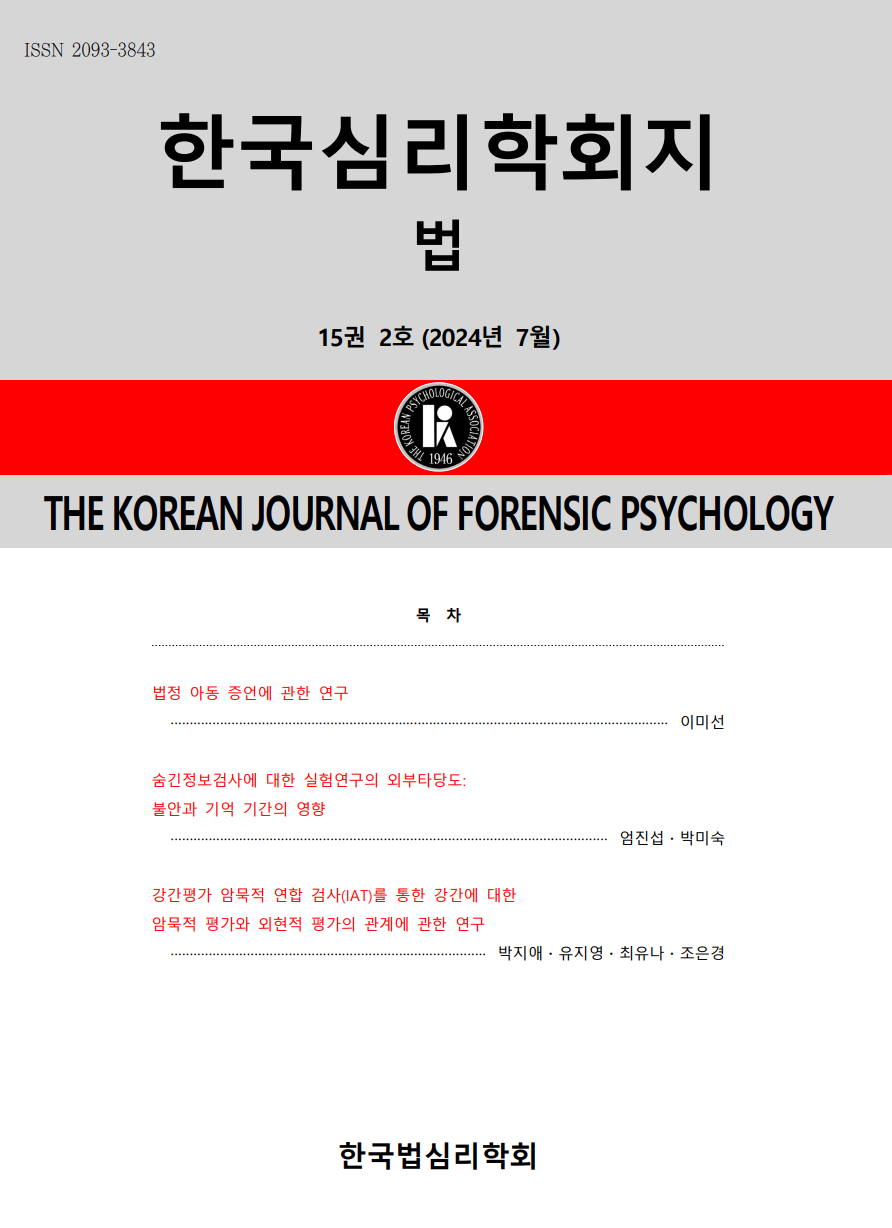 ISSN : 2093-3843
ISSN : 2093-3843
The current study applied the random forest algorithm to Korean crime victim survey data collected biennially between 2010 and 2018 to explore the relationship between crime/victim characteristics and the victim’s criminal damages. A total of 3,080 cases including gender, age (life cycle stage), type of crime, perpetrator acquisition, repeated victimization, psychological damage (depression, isolation, extreme fear, somatic symptoms, interpersonal problems, moving out to avoid people, suicidal impulses, suicide attempts), and emotional changes after victimization (changes in self-protection confidence, self-esteem, confidence in others, confidence in legal institutions, and respect for Korean legal system/law) were analyzed. Considering the features of data that are difficult to apply traditional statistical techniques, this study implemented random forest algorithms to predict crime and victim characteristics using the victim’s criminal damages (psychological damage and emotional change) and selected good predictors using VSURF function in VSURF package for R. As a result of the analysis, it was confirmed that the relationship between the type of crime and depression, extreme fear, somatic symptoms, and interpersonal problems, between perpetrator acquisition and somatic symptoms and interpersonal problems, and between repeated victimization and changes in respect for Korean legal system/law. Gender and life cycle stage (youth/adult/elderly) were found to be related to extreme fear and changes in self-protection confidence, respectively. However, more empirical evidence should be aggregated to explain the results as meaningful. The results of this study suggest that it is necessary to enhance the experts’ knowledge and educate them on cases about the relationship between crime/victim characteristics and criminal damage. Strengthening their interview strategy and knowledge about law/rules were also needed to increase the effectiveness of the Korean victim assessment system.